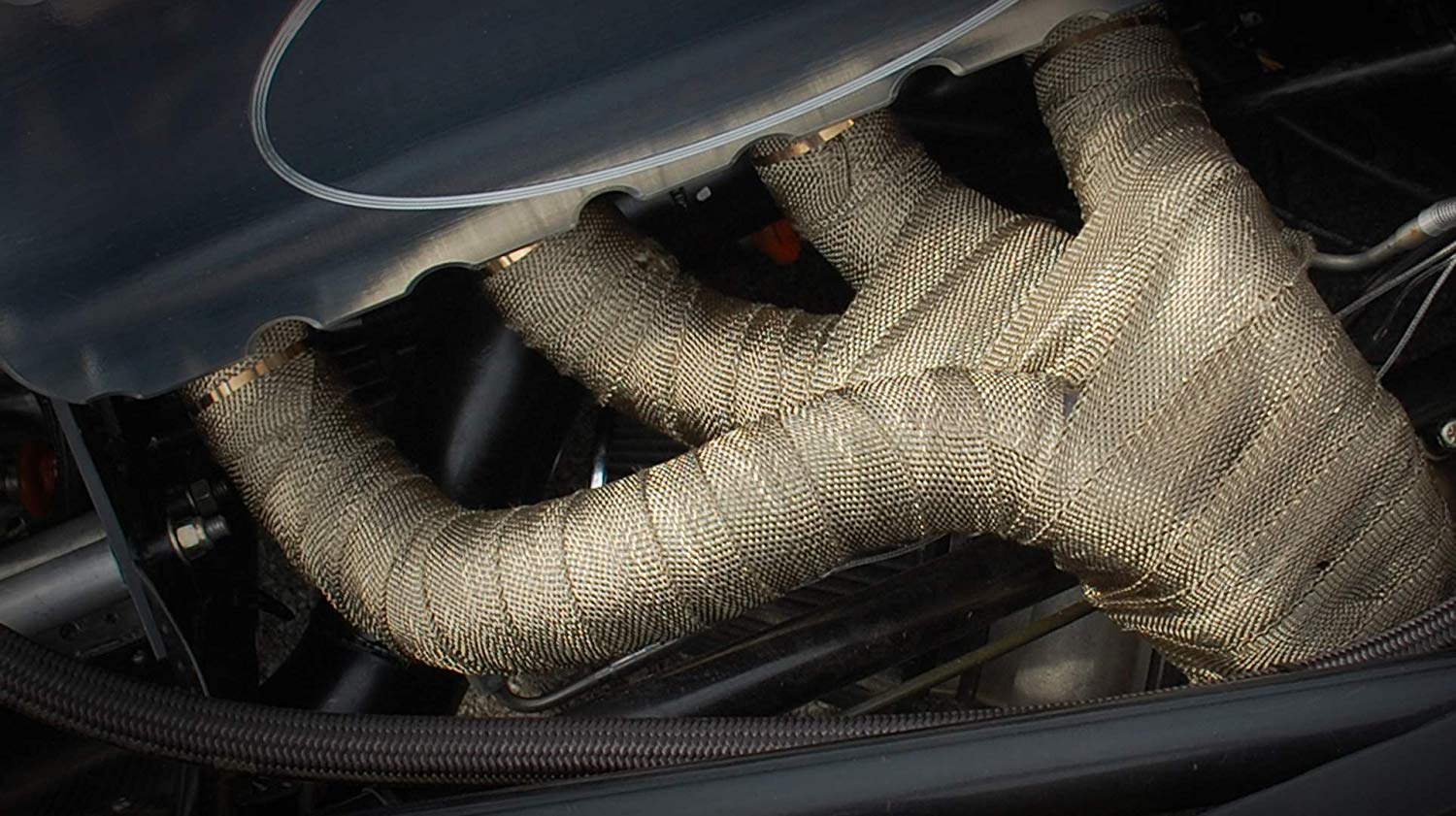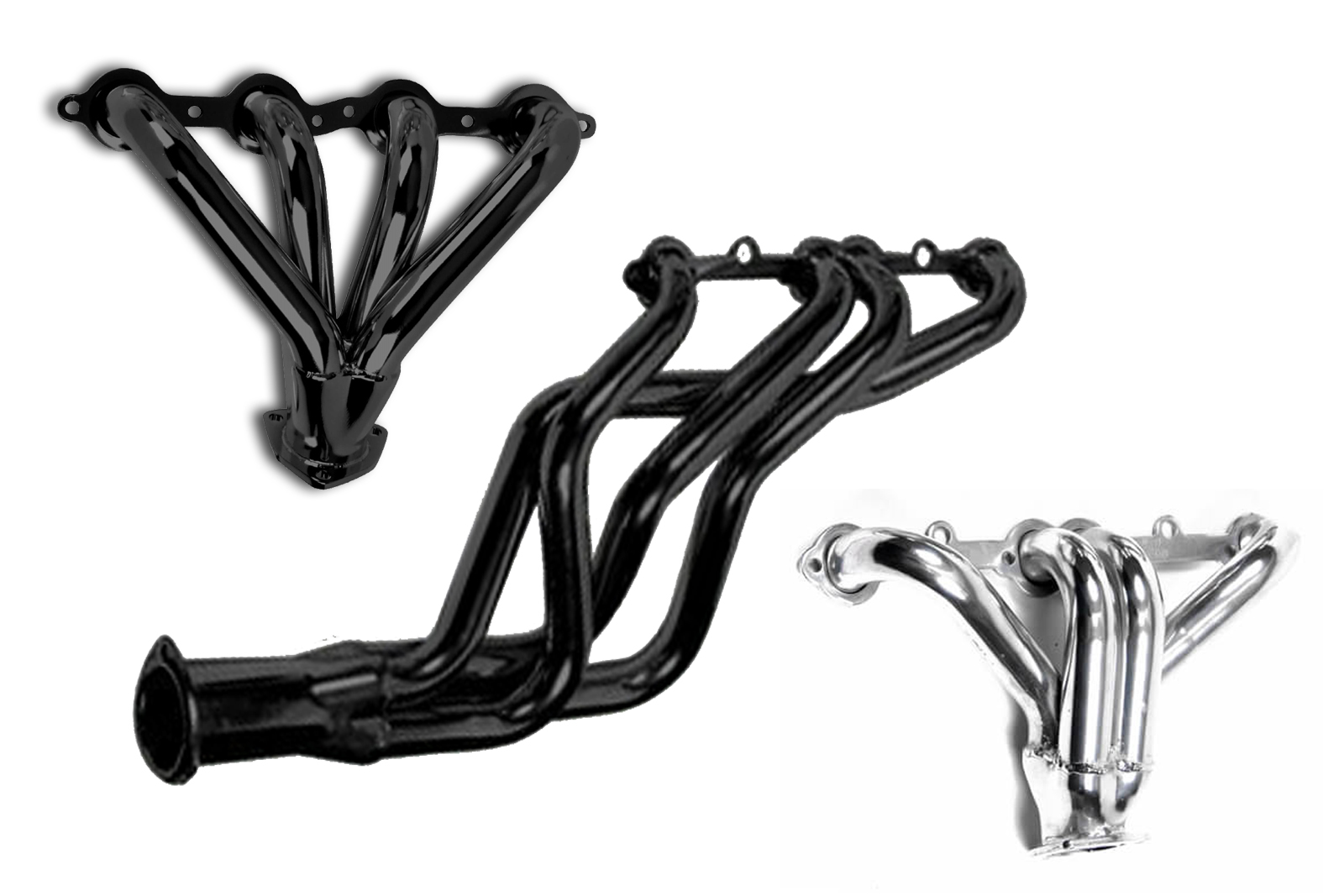To Wrap or Not to Wrap? Heat Wrap vs Ceramic Coating
Posted by Sean@topspeed on 10th May 2023
To Wrap or Not to Wrap? Heat Wrap vs Ceramic Coating
Here at Top Speed Pro 1 Performance, we get the question quite often, “should I wrap my exhaust system?” This is a great question, and we hope to shed some light on this topic with this segment. There are many benefits to wrapping your exhaust. First, you can increase performance slightly by containing the radiant heat inside the headers and/or manifold. The more heat you retain inside the pipes, the faster the exhaust can escape and exit the system therefore removing heat faster from inside the engine valves, pistons, etc. This will allow the engine to perform more efficiently and should give you a bump in overall brake horsepower.
Another benefit to wrapping the headers is to reduce the amount of heat in the engine bay therefore causing less wear on the engine components, especially rubber hoses, wiring harnesses, plastic components, airboxes, etc. It also reduces the amount of heat on turbochargers which will allow them to perform better by allowing them to move cooler air through the turbocharger and increasing performance overall. Plus, reducing heat from the air intake will also make that system send cooler outside air into the engine from the very beginning of the cycle. So, in most cases, it is a good idea to use heat wrap on headers and manifolds.

But what about the rest of the exhaust system? It is generally not recommended to wrap the exhaust system underneath the vehicle. The heat is at much lower temperatures underneath the vehicle, and therefore it is not necessary to wrap the exhaust pipes. It is especially not recommended to wrap the exhaust pipes on a titanium exhaust system. Wrapping titanium exhaust can lead to uneven heating and cooling of the metal, which can cause it to warp or crack over time. Additionally, titanium is already a highly heat-resistant material, so wrapping it may not provide any significant benefits in terms of reducing heat transfer to other parts of the vehicle. Therefore, it is generally not recommended to wrap titanium exhaust.
There is also some debate over whether to use ceramic coating vs exhaust wrap. Ceramic coatings are a good option in many cases because they can be applied to the exterior and interior of the manifolds to help avoid the metal absorbing the radiant heat. However, there are different types of coatings for various temperature ranges. For example, there are several different types of ceramic coatings for different applications. For ceramic coating the temperature tolerance ranges from 1050 degrees C for motorsport applications, 650 degrees C for high performance and track use and 425 degrees C for aesthetics. Black has the highest temperature tolerance and the lighter the color, the lower the tolerance. Ceramic coating does have the advantage over wrap from a durability perspective. It will not be damaged by engine fluids unlike wrap which will degrade if in contacts engine oils, degreasers and or other fluids. There is also the risk of fire from engine oils being trapped in the heat wrap.

*** However, we do not recommend the use of ceramic coatings on our Top Speed Headers because the baking process requires such high heat that it can warp or damage the headers and cause fitment issues. This can also be the case on other aftermarket products, if the headers have separate flanges, it is usually not a good idea to ceramic coat these products.



